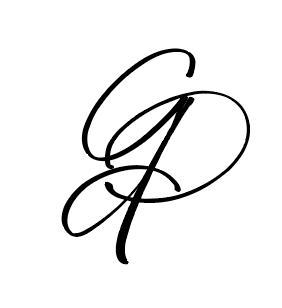“What is the key to being a good teacher?” I asked my English professor years ago.
“Simple,” he said. “I approach every student as if he wants to learn and deserves love.”
My son thrives in a school for learning differences where educators believe in “loving hard and forgiving hard.”
All of this reminds me of the quote by Ian Maclaren, “Be kind, for everyone you meet is fighting a hard battle.” Therefore, I approach pedagogy by believing that people want to learn—even when showing resistance. In my experience, people can learn and overcome blockage with fun and curiosity.
My teaching philosophy is connected with my life philosophy of savoring life, giving back and leaving the world better than how I found it. How do I apply that to teaching screenwriting, film and creative writing?
The overall tone I set for a course is one of respect, fun and curiosity. I’m filled with a wonder and excitement about the craft of writing and storytelling; I consider it my job to infuse that love of writing to my students. I focus on expanding students’ critical thinking by delving into rhetorical situations—in and out of the classroom and workshops. The application of critical thinking coupled with multimodal engagement leads to discovering authentic, well-developed solutions in writing.
My motivation as a teacher, writer and researcher grew from years of not understanding writing conventions. How could I have been singled out at a young age for my story telling and at the same time struggled with form? What I didn’t understand was that a part of my confusion with form was attributed to dyslexia and being a right-brain (creative) dominant.
Dyslexia and right-brain thinking inspired me find specific methods and techniques to write and process this visual language. To overcome my undiagnosed learning difference, I taught myself to write in multimodal ways before it was widely used by educators. In doing so, I created helpful methods that logically organized structure and thoughts.
A large pedagogical influence are Jody Shipka, Rik Hunter and Cheryl E. Ball with their applications and studies with multimodal education in English, composition and media. Another big impact came from studying with Academy award-winning and -nominated screenwriters Tom Rickman (“Coal Miner’s Daughter”), Len Schrader (“Kiss of the Spiderwoman”) and Gil Dennis (“Walk the Line”). Each of them varied their written, audio and visual instruction that created a more comprehensive understanding of character and structure.
A repeatable method was missing from each of these instructors. Therefore, when teaching, I identify character-driven (right-brain) and structure-driven (left-brain) students. I learned this process while at the American Film Institute. In my screenwriting and creative writing courses, I cover specific conventions of writing while using multimodal methods as well as sensory and symbolic clues to stir Jungian thought to reveal story and character motivations. I also include specific genres, emphasis on Joseph Campbell’s hero’s journey, and cover how to utilize those genres in connection with a rhetorical situation. This creates a more focused first draft by tapping into the subconscious.
I’m a visual communicator with a Jungian approach. Like someone who may translate English to Spanish when learning a new language, I developed tools, worksheets and exercises that play with writers’ natural inclination (whether organic or linear thinkers) in connection with symbols and sensory clues. That provides a solid foundation. It is also begins a writer’s road map where story can reveal itself through character-driven structure.
Every class is composed of unique learners. I start with where students are at when they enter classroom. I target their strengths, whether they write from their left-brain (a linear, structure-oriented, logical type thinking) or right-brain (a creative, character-oriented, emotive thinking). Once they understand their strengths, we develop their “underused strength” (the side of their brain less used). By keeping students with both learning styles present, it provides opportunities for students to assist others and take ownership in the class. In doing so, we’re celebrating the yin and yang of storytelling in which both sides are essential in creating a balanced, authentic story.
My goal is always to create a fun, focused, engaged course that is limited only by the students’ imagination. At the same time, I remain flexible within the course in order to achieve learning objectives. For example, I was a co-professor in a Holocaust course made up of diverse students, where I taught propaganda, film and media. Because students struggled to turn in work on time with the previous professors, I gave the students an option to write a four-page propaganda paper or create a multimodal World War II propaganda poster with supporting documentation. Despite their previous performance, 100% of students turned in multimodal posters and in on time. It was thrilling to review the student’s artwork that addressed their rhetorical situations.
It’s my personal mission to not only help students become stronger writers and communicators, but also to inspire underrepresented writers find their voice. For almost a decade, I was a single, working mother who understood, first-hand, the struggles of writing with limited time. Over the years, I’ve been refining my writing method and teaching it to aspiring screenwriters and creative writers. The process has shortened my writing time for focused first drafts by approximately 60% with scripts (from six to two months) and approximately 80% with books (from two years to five months). This method is also important for many women and underrepresented people, whose responsibilities and emotional workload have hindered the telling of their stories for generations.
My goal as a film and writing teacher is to demystify writing for my students, teach them craft basics and critical thinking as well as prepare them to question and change their world. My personal goal as a writer is to raise consciousness, thus leaving the world better than how I found it. I want the same for my students. It’s my honor to help them communicate in new ways and build a better world by bridging lives, communities and institutions.

